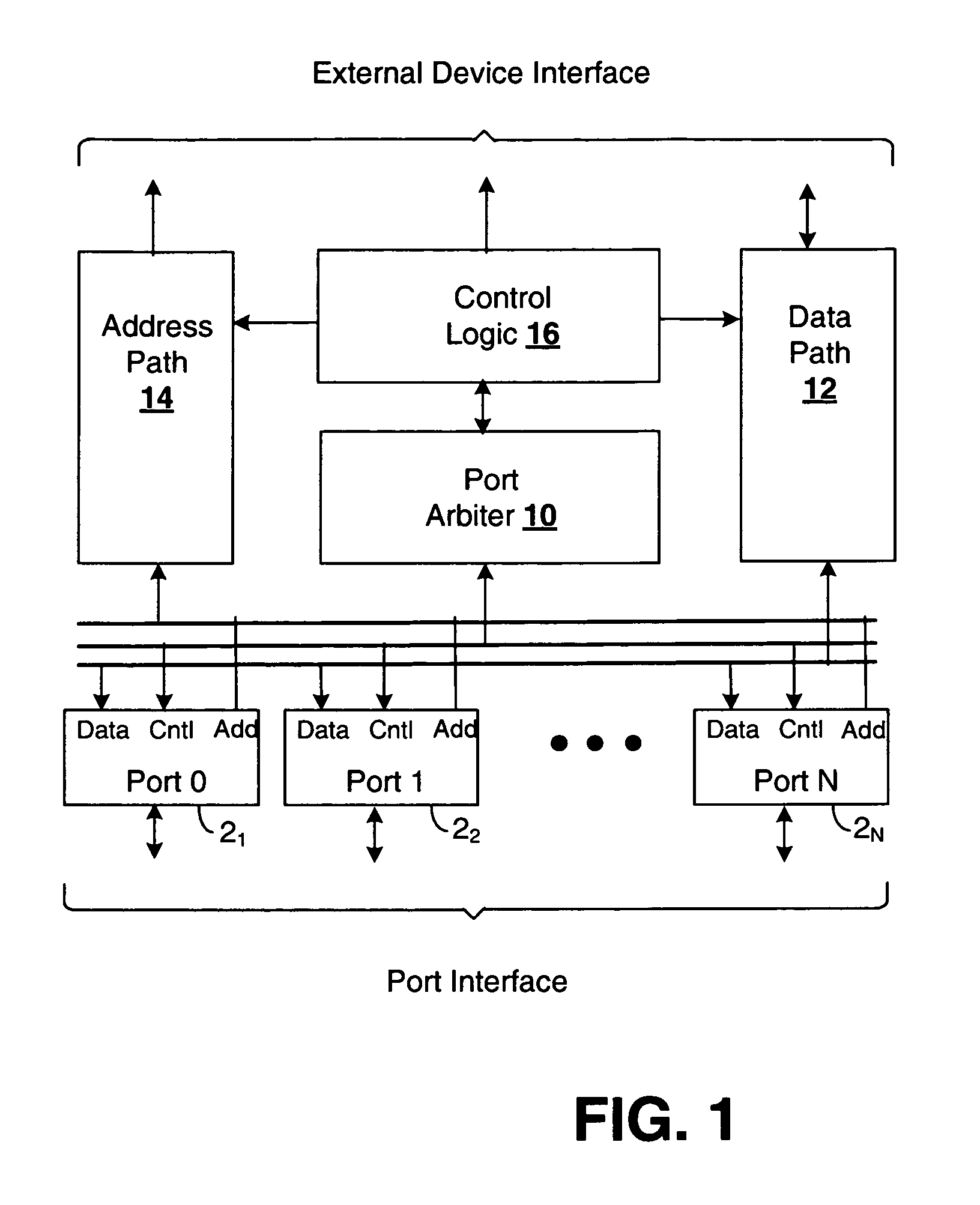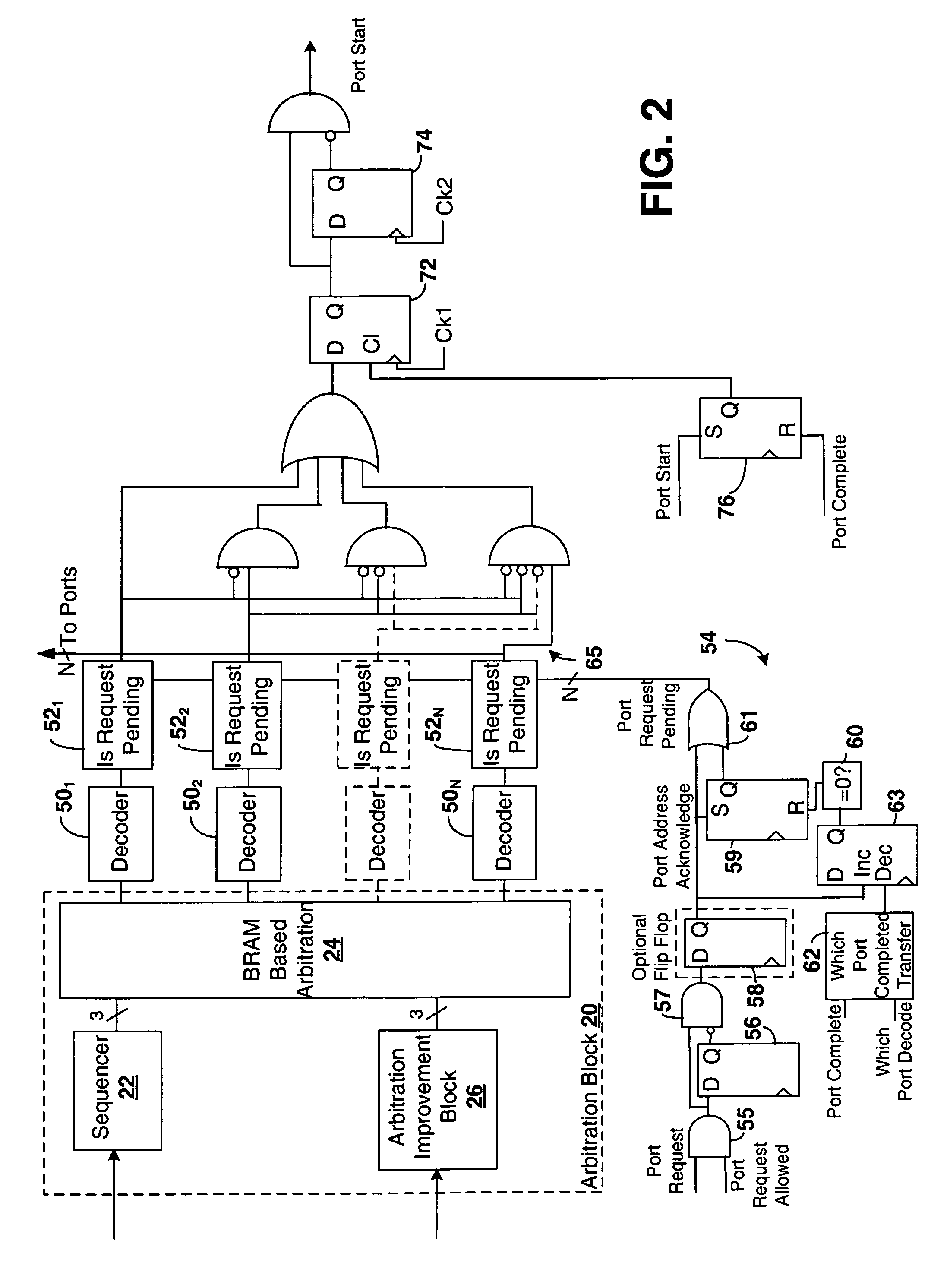Architecture for dynamically reprogrammable arbitration using memory
a dynamically reprogrammable, memory technology, applied in the field of arbitrators, can solve the problems of affecting the maximum clock frequency at which the arbitrator can operate, increasing the resources used, and affecting the maximum clock frequency of the arbitrator,
- Summary
- Abstract
- Description
- Claims
- Application Information
AI Technical Summary
Problems solved by technology
Method used
Image
Examples
Embodiment Construction
[0015]Use of BRAMs allows for efficient use of PLD resources to provide a memory controller with at least the five benefits described in the above summary. First, because most PLD based systems will not use all of the BRAMs in a given PLD, the BRAM is free logic. Use of BRAM for arbitration, thus, frees logic resources that would have gone into implementing the arbiter for other uses. By using BRAM to minimize PLD resources required, the PLD arbiter provides low latency with a high clock frequency, even when implementing complex arbitration.
[0016]Second, BRAMs allow for implementation of multiple arbitration schemes. BRAMs are large, some occupying 18 kilobytes like the Virtex-4 FPGA made by Xilinx, Inc. of San Jose, Calif. This means that if the BRAM is used to hold the arbiter sequencing scheme and 36 outputs are desired, there can be up to 512 sequences in the arbitration scheme. This is far more sequences than typically used for one arbiter, opening up the possibility of storing...
PUM
 Login to View More
Login to View More Abstract
Description
Claims
Application Information
 Login to View More
Login to View More - R&D
- Intellectual Property
- Life Sciences
- Materials
- Tech Scout
- Unparalleled Data Quality
- Higher Quality Content
- 60% Fewer Hallucinations
Browse by: Latest US Patents, China's latest patents, Technical Efficacy Thesaurus, Application Domain, Technology Topic, Popular Technical Reports.
© 2025 PatSnap. All rights reserved.Legal|Privacy policy|Modern Slavery Act Transparency Statement|Sitemap|About US| Contact US: help@patsnap.com



